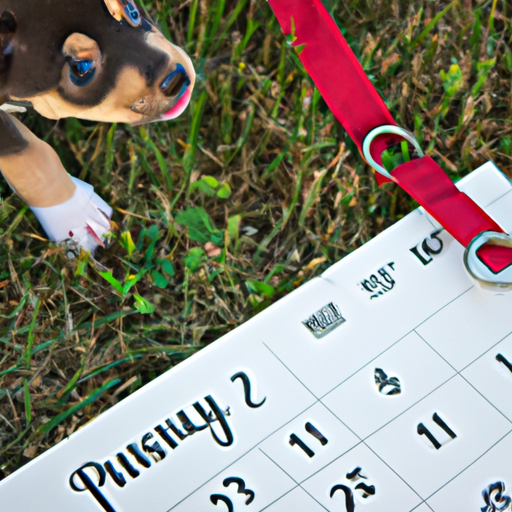Hello, dear caregiver!
You’ve just got a puppy and you are overflowing with joy and excitement. You can’t wait to take your little buddy out and show them the world, but you’re wondering, “When can I walk my puppy?”. This comprehensive guide is here to answer that question for you.
Understanding Your Puppy’s Vaccination Schedule
Before taking your puppy out for a walk, it’s crucial to ensure they’ve received all their initial vaccinations. These vaccinations protect your puppy from harmful diseases they might encounter when they start exploring the world.
- 6-8 weeks: Distemper, measles, parainfluenza
- 10-12 weeks: DHPP (vaccines for distemper, adenovirus, parainfluenza, and parvovirus)
- 12-24 weeks: Rabies
- 14-16 weeks: DHPP
Remember, the exact timing may vary depending on the breed and health condition of your puppy. Always consult with your vet for the most accurate information.
The Importance of Socialization
Research has shown that puppies have a ‘socialization window’ that closes around 16 weeks of age. This is a crucial period in their life to expose them to different experiences, including walking outdoors. However, since they’re not fully vaccinated until around 16 weeks, you might be wondering how to balance this. Here are some safe ways to socialize your puppy before they’re fully vaccinated:
- Carry your puppy in your arms during walks
- Arrange playdates with vaccinated adult dogs
- Introduce them to different people and environments at home
The First Walk: What to Expect
The first walk can be a scary experience for your puppy. Everything is new to them – the sounds, the smells, and the sensations. Here are some tips to help you make your puppy’s first walk a positive experience:
- Start Slow: Keep the first few walks short and sweet. Start with a brief 5-minute walk around the block and gradually increase the time as your puppy gets more comfortable.
- Use a Harness: A harness can provide more control and is generally safer and more comfortable for puppies.
- Bring Treats: Reward your puppy with treats and praises to reinforce positive behaviors during the walk.
Training Your Puppy to Walk on a Leash
Leash training is an essential part of walking your puppy. Here are some steps to get you started:
- Introduce the Leash: Let your puppy sniff the leash and reward them with a treat to create a positive association.
- Indoor Training: Start by walking around the house with the leash on.
- Outdoor Training: Once they’re comfortable with the leash indoors, gradually start practicing outdoors.
Walking Schedule for Puppies
Puppies have a lot of energy and they need regular exercise to stay healthy. However, too much walking can harm their developing joints. Here are some guidelines for how long walks should be at different ages:
| Age | Length of Walk |
|---|---|
| 3-6 months | 5-10 minutes |
| 6-12 months | 15-20 minutes |
| 1-2 years | 30-60 minutes |
Remember, these are just guidelines. Always monitor your puppy and adjust based on their energy level and health condition.
Health Benefits of Walking Your Puppy
Walking your puppy isn’t just for fun, it also has numerous health benefits:
- Physical Exercise: Walking helps maintain a healthy weight and strengthens their muscles and bones.
- Mental Stimulation: The variety of smells and sights during a walk provides mental stimulation.
- Behavioral Benefits: Regular exercise can help reduce common behavior problems like excessive barking or chewing.
Frequently Asked Questions
Q: Can I walk my puppy before they’re fully vaccinated?
A: You should avoid places where unvaccinated dogs might have been until your puppy is fully vaccinated. However, you can carry your puppy in your arms during walks or let them explore safe areas like your backyard.
Q: How often should I walk my puppy?
A: This depends on their breed, age, and health. Generally, puppies should have up to five minutes of exercise per month of age up to twice a day.
Q: What if my puppy is scared of walking?
A: Be patient and start slow. Use treats and praises to make the experience positive. If your puppy seems overly scared, consult with a professional trainer or a vet.
Remember, every puppy is unique and these guidelines might not perfectly apply to your puppy. Always consult with a vet or a professional trainer to understand what’s best for your puppy. Now that you know when and how to walk your puppy, it’s time to lace up your walking shoes and start exploring the world with your new best friend!



